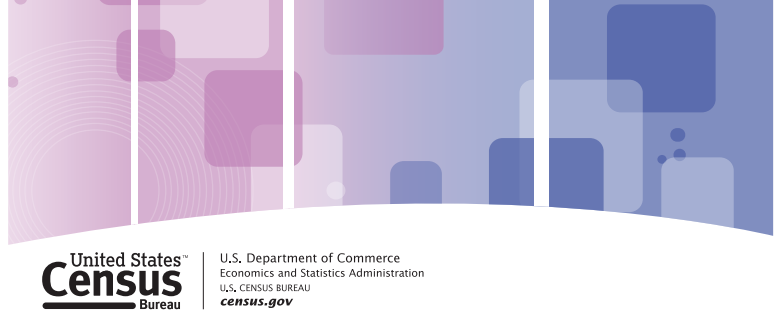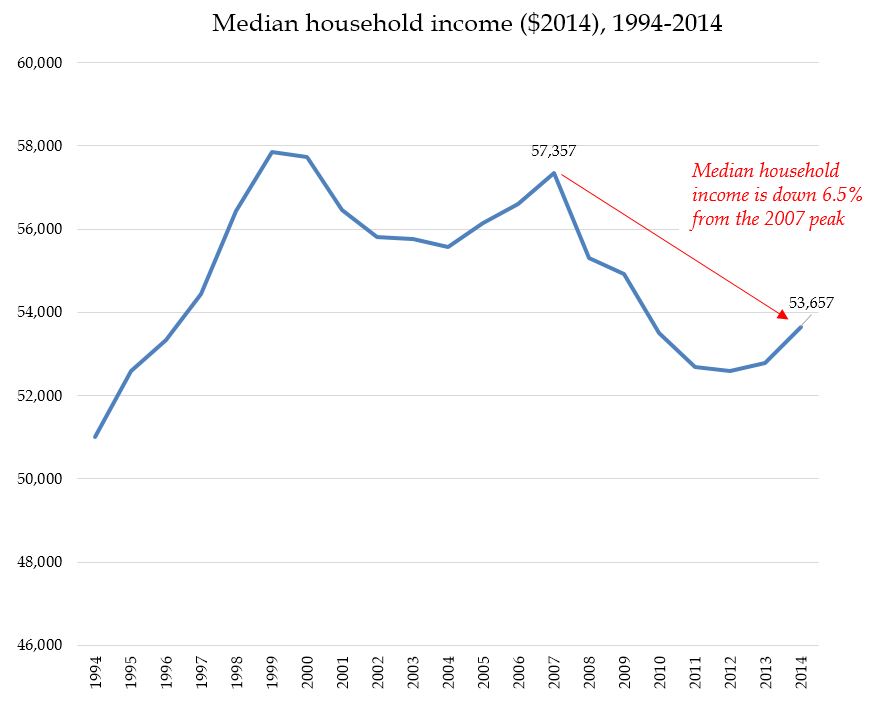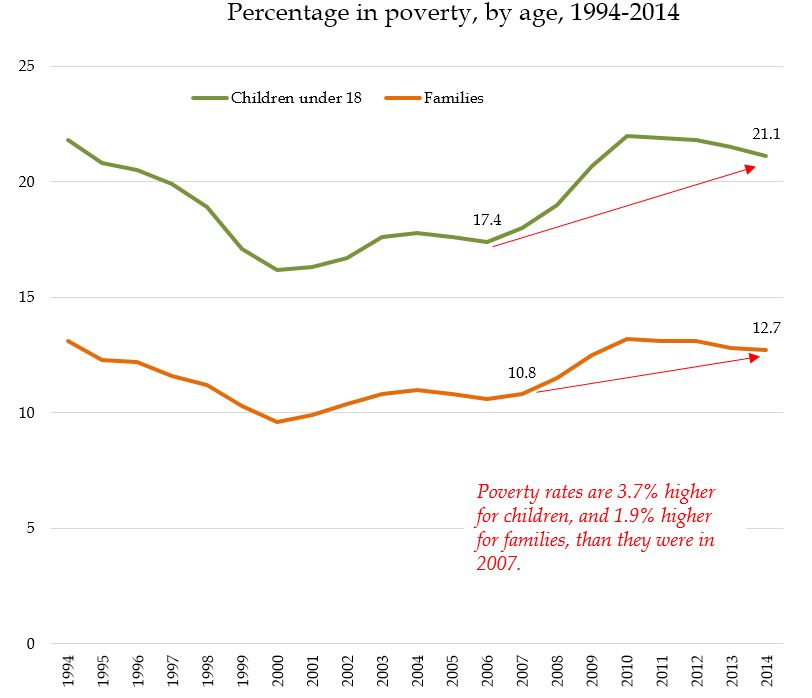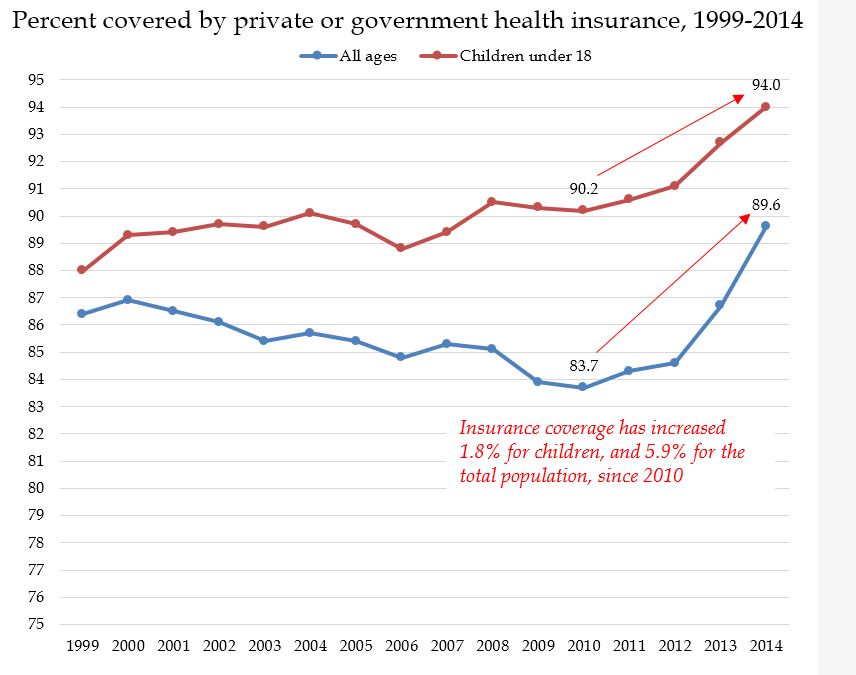September 16, 2015; The U.S. Census Bureau’s report on income, poverty and health insurance coverage, released today, reflects the continued uncertainty for U.S. families that has persisted since the Great Recession. Year-to-year changes in most trends were modest or not statistically significant—except in the case of health insurance coverage—but the longer-term trends are important.
Specifically:
- Household income has still not recovered to its pre-recession levels. In inflation-adjusted 2014 dollars, household income is now $53,657, which is down 6.5% from the pre-recession peak of $57,357. Although there has been improvement since the lowest level in 2011-2012, this remains a substantial loss—and source of uncertainty—for the typical U.S. household, even with the steady job growth of the last six years.
- Similarly, poverty rates for families remain higher than they were before the recession. In 2014, 21.1% of children lived below the poverty line—up from 17.4% in 2007. For families overall, the poverty rate stands at 12.7%, which is 1.9% higher than it was in 2007.
- The most important good news, continuing recent trends, may be the increase in health insurance coverage. Insurance coverage (from all sources) has increased 1.8% for children, and 5.9% for the total population, since 2010—now standing at 94% for children and 89.6% for the total population. This is generally attributed to the expansion of insurance coverage provided by Obamacare.
Despite strong job growth, the recovery remains a mixed one for U.S. families, with significant uncertainty and hardship a persistent part of family life for many people. However, with household income down and poverty up, the expansion of health insurance coverage may be easing the strain for families, helping to mitigate one important source of uncertainty and potential crisis—the costs associated with a sudden, or ongoing, health condition requiring expensive care.




